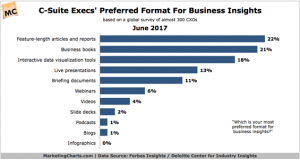What The Hell Is ‘Time Spent’ With Advertising, Anyway?
Over at MediaPost’s Research Intelligencer, Joe Mandese is running a series of columns digging into a couple of questions:
— How much time are consumers spending with advertising?
— How much is that time worth?
The quick answers are 1.84 hours daily, and about $3.40 per hour.
Although Joe readily admits that these are “back of the envelope” calculations, regular Mediapost reader and commentator Ed Papazian points out a gaping hole in the logic of these questions: An hour of being exposed to ads does not equal an hour spent with those ads, and it certainly doesn’t mean a whole hour of someone’s actually being aware of the ads.
Ignoring this fundamental glitch is symptomatic of the conceit of the advertising business in general. They believe there is a value exchange possible, where paying consumers to watch advertising is related to the effectiveness of that advertising.
The oversimplification required to rationalize this exchange is staggering. It essentially ignores the fields of cognitive psychology and neuroscience. It assumes that audience attention is a simple door that can be opened only if the price is right.
It just isn’t that simple.
Let’s go back to the concept of time spent with media. There are many studies done that quantify this. But the simple truth is that media is too big a catchall category to make this quantification meaningful. We’re not even attempting to compare apples and oranges. We’re comparing an apple, a jigsaw and a meteor. The cognitive variations alone in how we consume media are immense.
And while I’m on a rant, let’s nuke the term “consumption” altogether, shall we? It’s probably the most misleading word ever coined to define our relationship with media.
We don’t consume media any more than we consume our physical environment. It is an informational context within which we function. We interact with aspects of it, with varying degrees of intention. Trying to measure all these interactions with a single yardstick is the same as trying to measure our physical interactions with water, oxygen, gravity and an apple tree by the same criterion.
Even trying to dig into this question has a major methodological flaw: We almost never think about advertising. It is usually forced on our consciousness. So to use a research tools like a survey, requiring respondents to actively explore their subconscious relationship with advertising, is like using a banana to drive a nail. It’s the wrong tool for the job. It’s the same as me asking you how much you would pay per hour to have access to gravity.
This current fervor all comes from a prediction from Publicis Groupe Chief Growth Officer Rishad Tobaccowala that the supply of consumer attention would erode by 20% to 30% in the next five years. By putting a number on attention, Tobaccowala led up to a mistaken belief that attention could be managed by the industry.
The attention of your audience isn’t slipping away because advertising and media buying was mismanaged. It’s slipping away because your audience now has choices, and some of those choices don’t include advertising. Let’s just admit the obvious. People don’t want advertising. We only put up with advertising when we have no choice.
“But wait,” the ad industry is quick to protest, “In surveys people say they are willing to have ads in return for free access to media. In fact, almost 80% of respondents in a recent survey said that they prefer the ad-supported model!”
Again, we have the methodological fly in the ointment. We’re asking people to stop and think about something they never stop and think about. You’re not going to get the right answer.
A better approach would be to think about what happens when you go to a news site with your ad blocker on. “Hey,” the pop-up says, “We notice you’re using an ad blocker.” If you have the option of turning the ad blocker off to see the article or just clicking a link that lets you see it anyway, which are you going to choose?
That’s what I thought. And you’re probably in the ad business. It pays your mortgage.
Look, I get that the ad business is in crisis. And I also understand why the industry is motivated to find an answer. But the complexity of the issue in front of us is staggering, and no one is well-served by oversimplifying it down to putting a price tag on our attention.
We have to understand that we’re in an industry where, given the choice, people would rather not have anything to do with us. Unless we do that, we’ll just be making the same mistakes over and over again.
(99)







